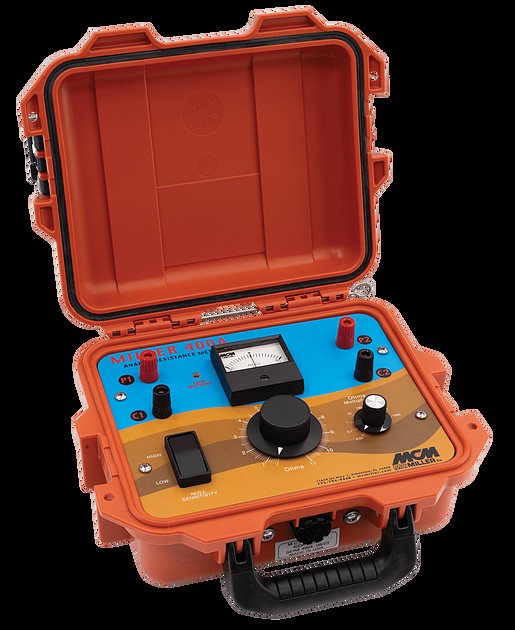This resistivity meter can be easily used to measure resistivity of soil in-situ using the 2, 3, or 4 electrode method or with a soil box to measure resistivity of soil or water in the range of distilled to sea water. Resistance measurement range is from 0.01? to 1.1M? and resistance measurements are unaffected by any stray interference signals that may be present in the earth during measurement, due to use of narrow band-pass filters. It has a rugged, lightweight weatherproof case with an IP67 rating for dust and water intrusion. The lid can be removed to facilitate use and movement of the meter to new locations without removing test leads. Runs on a set of C-cell alkaline batteries eliminating recharging and plugged-in powersources.
Depending on the application this resistivity meter can be used to determine thefollowing:
The average earth resistivity to a specific depth (with the application of an appropriate multiplier to convert resistance to resistivity, based on the electrode separation distance) 4-ElectrodeApplication
The resistivity of a soil sample, or of a liquid, via an electrolyte (soil/liquid) box (with the application of an appropriate multiplier to convert resistance to resistivity, depending on the box geometry) 4-ElectrodeApplication
The resistance-to-earth of a buried electrode, such as a ground rod, or an anode, for example 3-ElectrodeApplication
The resistance between two buried electrodes, such as two ground rods, or two anodes 2-ElectrodeApplication
The current source in the H-4385 resistivity meter, which supplies current between the C1 and C2 terminals (with a load applied), is a 12V(rms) crystal-controlled 97Hz square wave oscillator and the voltmeter inside the unit, which senses the potential difference (voltage drop) appearing across the P1 and P2 terminals, employs a very narrow band-pass filter centered at 97Hz What this means is that resistance measurements taken by the H-4385 resistivity meter are unaffected by any stray interference signals (having frequencies other than 97Hz) that may be present in the earth during ameasurement.
